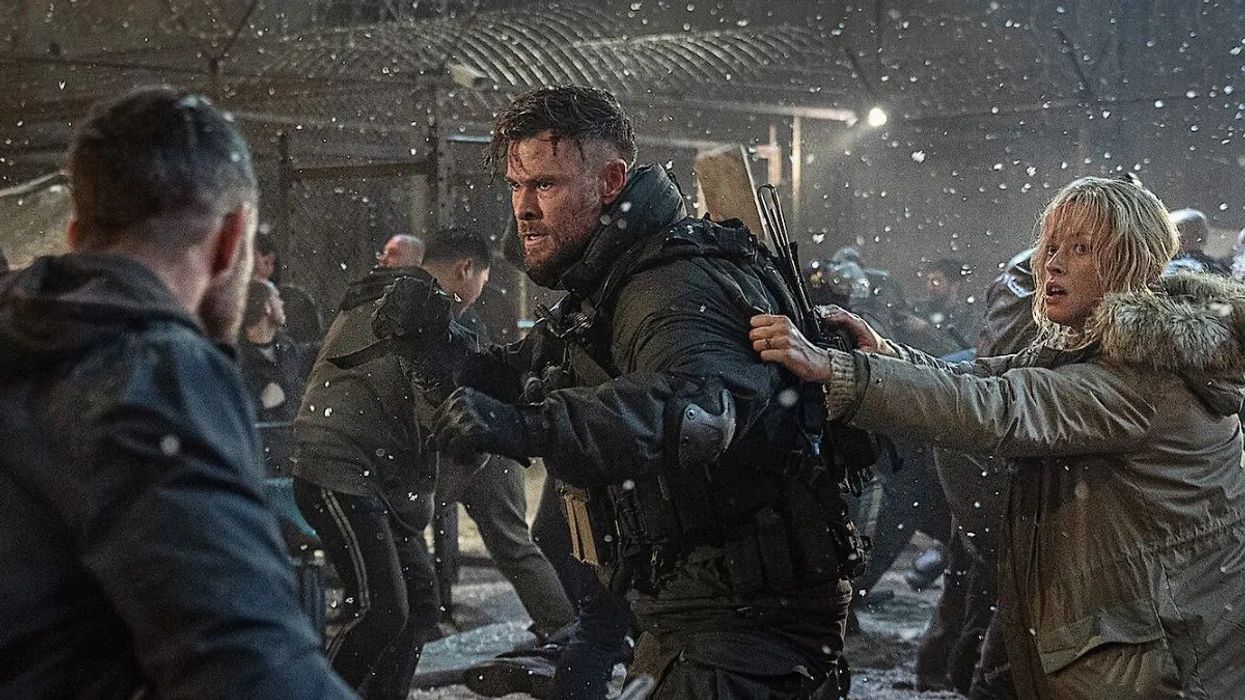Here’s What You Can Learn From That 22-Minute Oner From 'Extraction 2'
From directing to writing tips, there’s a lot to discover.

Extraction 2, the sequel to the Netflix action flick Extraction starring Chris Hemsworth, is getting a lot of buzz lately, and rightfully so. News broke about a one-take shot (also called a oner) that lasted for 22 minutes (or 21 minutes, depending on who you ask).
So how was it all done?
Well, we hate to break it to you, but it wasn’t all one take but actually a series of shots that were stitched together into one seamless sequence à la Birdman.
Preparing the Sequence
Getting something like this off the ground is no simple feat. Now add in explosions, racing cars, and guns.
“We spent months perfecting this and kinda putting all the pieces together and building this sequence shot by shot,” director Sam Hargrave said during his interview with Netflix: Behind the Streams.
What’s interesting about this sequence right off the bat is how much Hargrave operated the camera himself. If you see the video above, he’s the one in the white helmet riding on the back of the ATV.

“Part of the reason that I put myself in those spots is because I’ve been in some tough spots before from my career with stunts, and there’s kind of an innate body awareness that you really only get having been in those kinds of situations,” Hargrave said.
But even with months of prep, mistakes were bound to happen. At the beginning of the sequence, a car was supposed to hit a pile of pipes and then flip over. However, the stunt mechanism was triggered early, causing the car to flip early and land the pipes instead.

Hargrave thought the outcome was a lot better than what they had planned. With the help of the VFX team, they added in CGI element that the car “appeared” to crash into, making the moment feel deliberate.
This is the first thing we can learn from this sequence. Sometimes things go wrong on set, but that doesn’t mean you have to reshoot. Spontaneous moments are sometimes better for the film in the end.
Coming Back to Set
You’d think that with all that planning, this whole sequence would be shot and done. But after reviewing what they had, the team decided to return and add in more moments of dialogue.
“We actually came back and shot this a few different times just to add in a little more interaction, a little more dialogue between the characters because you need to keep giving it context, and no matter how cool and exciting the action can be, you’ve got to keep bringing it back to, or grounding it with, who’s the character you’re watching, what’s his relationship to this, what are the stakes here beyond what you’re seeing,” Hemsworth explained during the interview.

Here’s the second thing we learn.
Even if you write the perfect scene into your script, once you shoot it and see it on screen, you will always see things differently or discover holes in your story and plot.
When creating a film, it’s always a good idea to make room for going back and shooting more material that can elevate your film.
Keeping Things the Same
Not only was the entire sequence shot out of order, but there were also many weeks or months between moments that happened seconds after each other within the film.
“This we shot many weeks, maybe months later,” Hargrave said when referring to two seamless takes shot months apart.
He continued saying, “The continuity has to be so spot on. His hair has to be the same. His costume has to be the same … cause it's an instant in the movie but a month apart in [shooting] time.”
While you may think this last nugget won’t pertain to all filmmakers, you’d be surprised how bad continuity can break immersion, even for the casual filmmaker. When putting your scenes together, no matter how small, ensure that your continuity between shots stays consistent.
If your schedule and budget don’t allow someone to keep an eagle eye on the details, think about how you can plan your shots so that things stay the same between takes.
You can find out more about how Sam Hargrave tackled creating and directing Extraction 2 on the No Film School Podcast below!
But we want to know what you learned from this look behind the scenes. Let us know in the comments!
Source: Netflix: Behind the Streams











